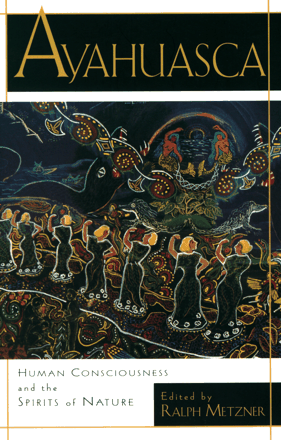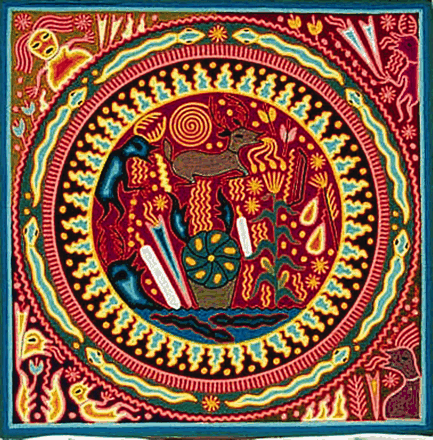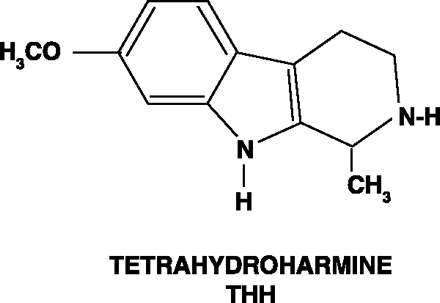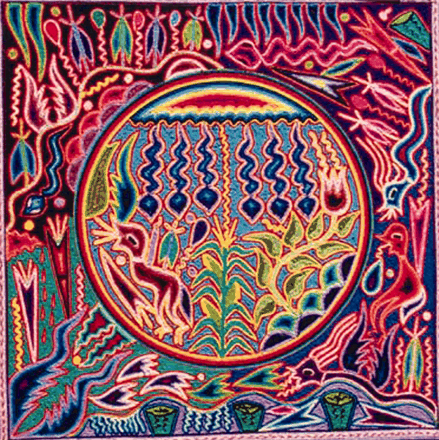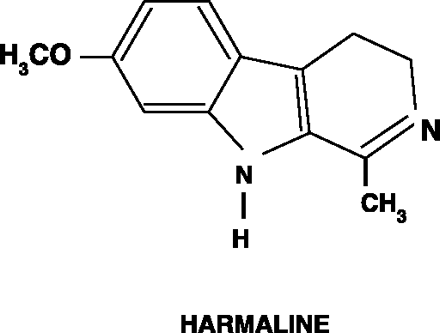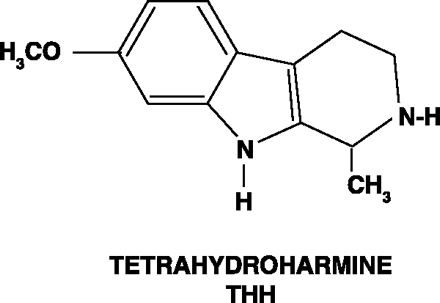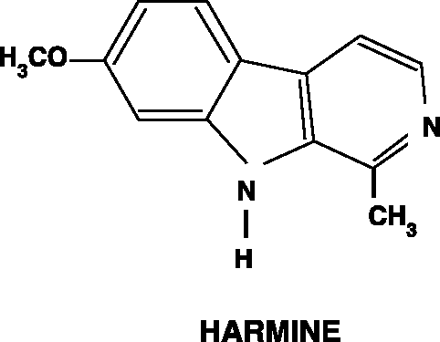Is Timothy Leary Dead, or Is He Just Outside Looking In?
- Christie Carrico, PhD
Ayahuasca: Human Consciousness and the Spirits of Nature. Ralph Metzner (ed.). New York: Thounder’s Mouth Press/Avalon; 1999. 240 pages. $14.95. ISBN: 1560251603
Ayahuasca,” from the Amazonian language Quechua, translates to “vine of the souls.” Ayahuasca is also the name given to an herbal beverage prepared by boiling together or soaking the bark and stems of Banisteriopsis caapi with the leafy plant Psychotria viridis and a variety of other herbal components, depending on which part of the world one is in. Ayahuasca is a hallucinogen that relies upon the pharmacological synergy of its two primary plant components. P. viridis contains the powerful psychoactive compound, dimethyltryptamine (DMT). DMT, however, is not orally active because it is metabolized by monoamine oxidase (MAO) in the stomach, and infusions of P. viridis have no psychoactive properties. B. caapi contains the β-carbolines harmine, tetrahydroharmine, and harmaline, which are MAO inhibitors. Thus, combining psychoactive DMT with MAO inhibitors allows the drug to be absorbed and to cross the blood–brain barrier to produce its hallucinogenic effects. Basically, what we have here is an herbal hallucinogen that carries with it its own botanical drug delivery system.
Ayahuasca: Human Consciousness and the Spirits of Nature explores all aspects of this pharmacologic marriage in a series of essays edited by Ralph Metzner. Metzner holds a doctorate in clinical psychology from Harvard and is a professor of psychology at the California Institute of Integral Studies. He has published several books and articles, including one coauthored with Timothy Leary. The forty-six page introduction by Metzner covers the history of the phenomenology of consciousness, the discovery of the shamanistic origins of ayahuasca and other hallucinogens, the developmentof the legal religions that use ayahuasca, and some of the hallucinogenic images associated with the drugs.
Ayahuasca is used throughout South America; its first documented use dates to the mid-1800s. It is not known how this arcane interaction was discovered, because P. viridis and B. caapi do not grow in close proximity to one another; not surprisingly, devotees of the brew credit divine intervention. (Indeed, there are at least two legal religions in South America based around the use of ayahuasca.) Ayahuasca is viewed by its users as a magic intoxicant, given by the gods to facilitate the release of the soul from its corporeal confinement, thus allowing the soul to wander free and gather information and return to the body at will. The visions that it induces, frequently involving jaguars and large snakes, are perceived as the inbibant’s dream spirit which, unconfined by the body, now has access to the supernatural realms.
Most of the book is devoted to personal accounts by ayahuasca users, either first-time users, or those who have come back again and again. There seem to be a large number of commonly perceived visions among users. These include:
-
The perception of separation of the soul from the physical body, associated with a sensation of flying and frequently accompanied by vertigo.
-
Visions of snakes, jaguars, or other predatory animals from the rain forest, regardless of where the drug is taken or the ethnicity of the user. Sometimes the user hallucinates that he eats these predators, sometimes he is eaten.
-
Sense of contact with supernatural realms, including visits to heaven and hell and meetings with the gods.
-
Visions of distanct people, places, and things.
Uniformly, however, the ayahuasca experience begins with a bitter taste, nausea, and emesis. It is only after one goes through the emetic phase that one begins to experience the hallucinogenic phase. The ayahuasca experience is nearly always accomplished in groups under the guidance of an experienced ayahuascero (essentially a shaman). The incidences of “bad” experiences (e.g., despair, being the eaten rather than the eater, delusions, etc.) are reputedly more common among first-time users or those who are not under the guidance of an ayahuascero. I know this makes me want to rush out and try it.
Reading the personal accounts of ayahuasca use is interesting at first, but there are twenty-four of them, and after a while, one realizes these individuals have been selected because they are champions of the cause. In fact, although there is a lot of history and science in this book, Ayahuasca is in no way a scientific book, because of its distinct lack of objectivity. The contributors of the nonexperiential chapters are all proponents of the drug––they make no attempt to hide that fact––and have written other books on ayahuasca: Dennis J. McKenna (Ayahuasca: An Ethnopharmacologic History), Charles Grob (The Psychology of Ayahuasca) and J. C. Callaway (Phytochemistry and Neuropharmacology of Ayahuasca). All of the scientific contributors support ayahuasca’s therapeutic potential and The Hoasca Project in Brazil, a semi-formal clinical trial that measures the effects of long-term use of ayahuasca vs controls on concentration, short-term memory, and attitude. Unfortunately, there seems to have been minimal editing of these three chapters and of the introduction, as evidenced by a large amount of repetition regarding the origins, effects, and composition of ayahuasca.
There are interesting snippets of pharmacology and ethnopharmacology interspersed amidst the propaganda. Long-term use of ayahuasca elevates the number of serotonin receptors on platelets. Excess serotonin concentrations induced by selective serotonin reuptake inhibitors (SSRIs) can cause nausea and vomiting, similar to that observed with ayahuasca ingestion––not surprising when one considers that DMT and serotonin possess very similar structures. The metabolism of harmala, one of the active MAO inhibitors, is regulated by a genetic polymorphism. The authors do warn that anyone taking MAO inhibitors or SSRIs should not try ayahuasca. Notwithstanding the admitted bias of the authors, it is regrettable that there is not more hard science delving into ayahuasca’s interesting features and pharmacologic effects.
- © American Society for Pharmacology and Experimental Theraputics 2004

